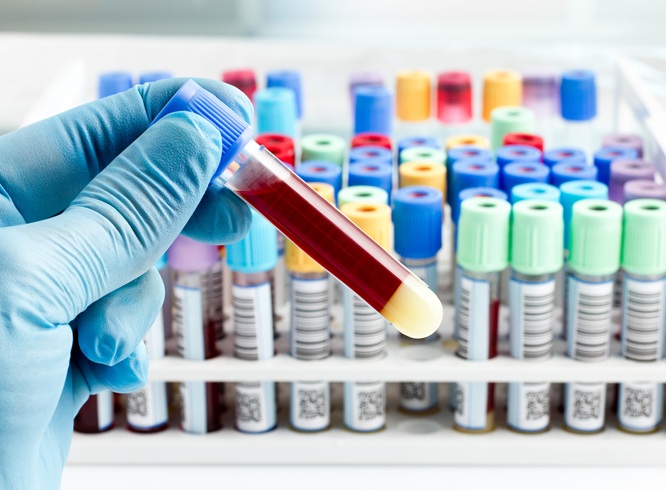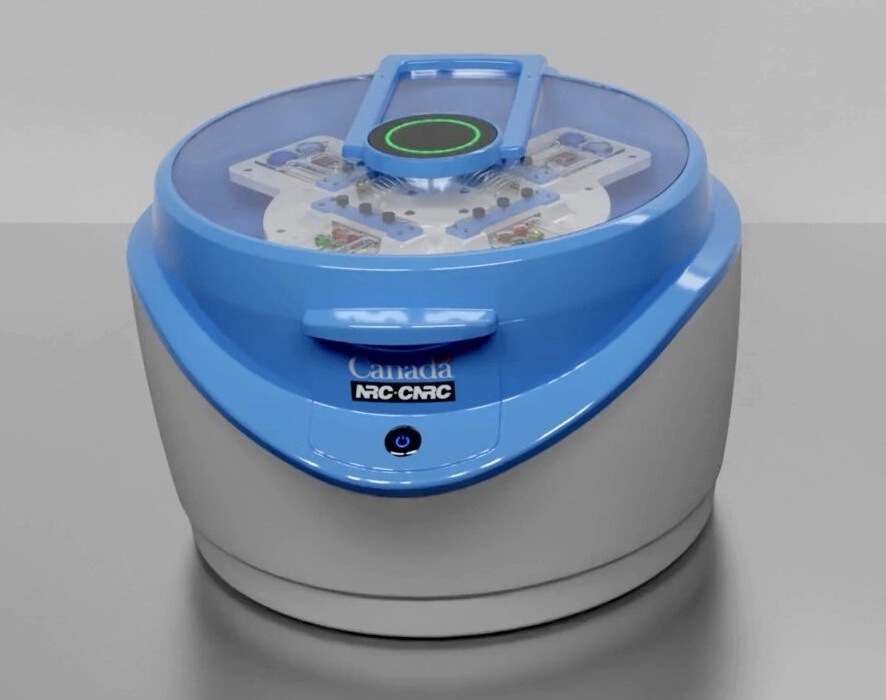Novel Device Reduces Blood Draw Contamination
|
By LabMedica International staff writers Posted on 01 Jun 2017 |

Image: The SteriPath initial specimen diversion device reduces blood culture contamination (Photo courtesy of Magnolia Medical Devices).
A novel device can significantly reduce contamination of blood cultures, potentially reducing risky overtreatment and unnecessary use of antibiotics for many patients. This approach could also substantially reduce healthcare costs.
Thousands of patients get their blood drawn every day for blood cultures in order to diagnose serious infections such as sepsis, which can be a deadly condition. A small but significant percentage of the blood cultures are contaminated, due in part to skin fragments containing bacteria that are dislodged during a blood draw.
Scientists at the University of Nebraska Medical Center conducted a prospective, controlled study with 904 patients and 1,808 blood cultures and compared the standard procedure to an initial specimen diversion device (ISDD) to determine whether blood culture contamination was reduced. The sterile blood collection system diverts and sequesters the first 1.5 to 2 mL of blood, which often carries contaminating skin cells and microbes and this part of the blood is discarded.
The team used the SteriPath initial specimen diversion device and were able to decrease the false positive rate significantly through use of this device, from 1.78% down to 0.2%, which represents an 88% reduction. Contamination rates routinely range from 0.6% to 6% in health care institutions the USA. Costs associated with blood culture contamination per patient case ranged from USD 1,000 in 1998 to USD 8,700 in 2009. A more recent study in the USA observed excess charges of USD 8,720 per contamination event.
Mark Rupp, MD, professor and lead author of the study, said, “A lot of people think this is a minor problem. However, contaminated blood cultures are a big deal. Physicians can be led astray and patients may be harmed by additional tests and unnecessary antimicrobial therapy. What is important about this device is it can greatly limit the blood culture from being contaminated, so physicians are rarely fooled by false-positive results. It gives clinicians confidence that results are accurate.” The study was published on in the journal Clinical Infectious Diseases.
Thousands of patients get their blood drawn every day for blood cultures in order to diagnose serious infections such as sepsis, which can be a deadly condition. A small but significant percentage of the blood cultures are contaminated, due in part to skin fragments containing bacteria that are dislodged during a blood draw.
Scientists at the University of Nebraska Medical Center conducted a prospective, controlled study with 904 patients and 1,808 blood cultures and compared the standard procedure to an initial specimen diversion device (ISDD) to determine whether blood culture contamination was reduced. The sterile blood collection system diverts and sequesters the first 1.5 to 2 mL of blood, which often carries contaminating skin cells and microbes and this part of the blood is discarded.
The team used the SteriPath initial specimen diversion device and were able to decrease the false positive rate significantly through use of this device, from 1.78% down to 0.2%, which represents an 88% reduction. Contamination rates routinely range from 0.6% to 6% in health care institutions the USA. Costs associated with blood culture contamination per patient case ranged from USD 1,000 in 1998 to USD 8,700 in 2009. A more recent study in the USA observed excess charges of USD 8,720 per contamination event.
Mark Rupp, MD, professor and lead author of the study, said, “A lot of people think this is a minor problem. However, contaminated blood cultures are a big deal. Physicians can be led astray and patients may be harmed by additional tests and unnecessary antimicrobial therapy. What is important about this device is it can greatly limit the blood culture from being contaminated, so physicians are rarely fooled by false-positive results. It gives clinicians confidence that results are accurate.” The study was published on in the journal Clinical Infectious Diseases.
Latest Technology News
- AI Method Predicts Overall Survival Rate of Prostate Cancer Patients
- Breath Test to Enable Early Detection of Breast Cancer
- First Ever Technology Recognizes Disease Biomarkers Directly in Menstrual Blood in Sanitary Towels
- Tiny Microlaser Sensors with Supercharged Biosensing Ability to Enable Early Disease Diagnosis
- Advanced Predictive Algorithms Identify Patients Having Undiagnosed Cancer
- Light Signature Algorithm to Enable Faster and More Precise Medical Diagnoses
- Disposable Microchip Technology Could Selectively Detect HIV in Whole Blood Samples
- Pain-On-A-Chip Microfluidic Device Determines Types of Chronic Pain from Blood Samples
- Innovative, Label-Free Ratiometric Fluorosensor Enables More Sensitive Viral RNA Detection
- Smartphones Could Diagnose Diseases Using Infrared Scans
- Novel Sensor Technology to Enable Early Diagnoses of Metabolic and Cardiovascular Disorders
- 3D Printing Breakthrough Enables Large Scale Development of Tiny Microfluidic Devices
- POC Paper-Based Sensor Platform to Transform Cardiac Diagnostics
- Study Explores Impact of POC Testing on Future of Diagnostics
- Low-Cost, Fast Response Sensor Enables Early and Accurate Detection of Lung Cancer
Channels
Clinical Chemistry
view channel
Portable Diagnostic Tool Uses Bioluminescence to Detect Viruses at POC
Point-of-care diagnostics have become crucial tools in many households, enabling individuals to measure blood sugar, conduct pregnancy tests, and even perform their own COVID-19 assays. These diagnostics... Read more
AI-Powered Lung Maturity Test Identifies Newborns at Higher Risk of Respiratory Distress
Each year, approximately 300,000 babies in the United States are born between 32 and 36 weeks' gestation, according to national health data. This group is at an elevated risk for respiratory distress,... Read more
AI-Powered Blood Test Accurately Detects Ovarian Cancer
Ovarian cancer ranks as the fifth leading cause of cancer-related deaths in women, largely due to late-stage diagnoses. Although over 90% of women exhibit symptoms in Stage I, only 20% are diagnosed in... Read more
Automated Decentralized cfDNA NGS Assay Identifies Alterations in Advanced Solid Tumors
Current circulating cell-free DNA (cfDNA) assays are typically centralized, requiring specialized handling and transportation of samples. Introducing a flexible, decentralized sequencing system at the... Read moreMolecular Diagnostics
view channel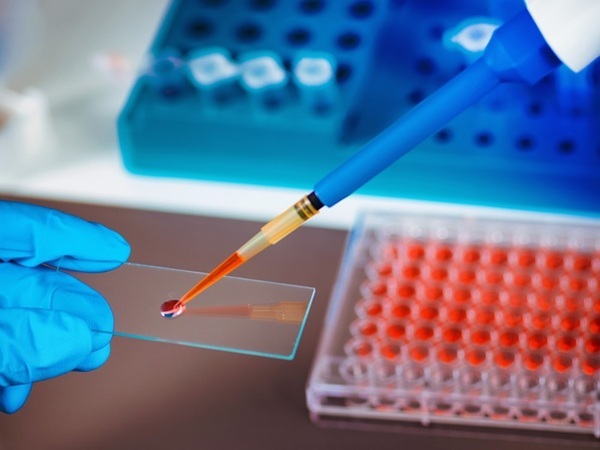
MCED Tests Detect Cancers in Bloodstream Three Years Prior To Diagnosis
Detecting cancer before symptoms emerge remains a major challenge in oncology. Now, a new study reveals that tumor-derived genetic material can be found in the bloodstream as early as three years before... Read more
Revolutionary Blood Test Aims to Fast-Track Lung Cancer Patients for Targeted Therapy
Delays in diagnosing and treating lung and breast cancer can significantly affect patient survival, especially when access to targeted therapies hinges on time-consuming tissue biopsies.... Read moreHematology
view channel
Disposable Cartridge-Based Test Delivers Rapid and Accurate CBC Results
Complete Blood Count (CBC) is one of the most commonly ordered lab tests, crucial for diagnosing diseases, monitoring therapies, and conducting routine health screenings. However, more than 90% of physician... Read more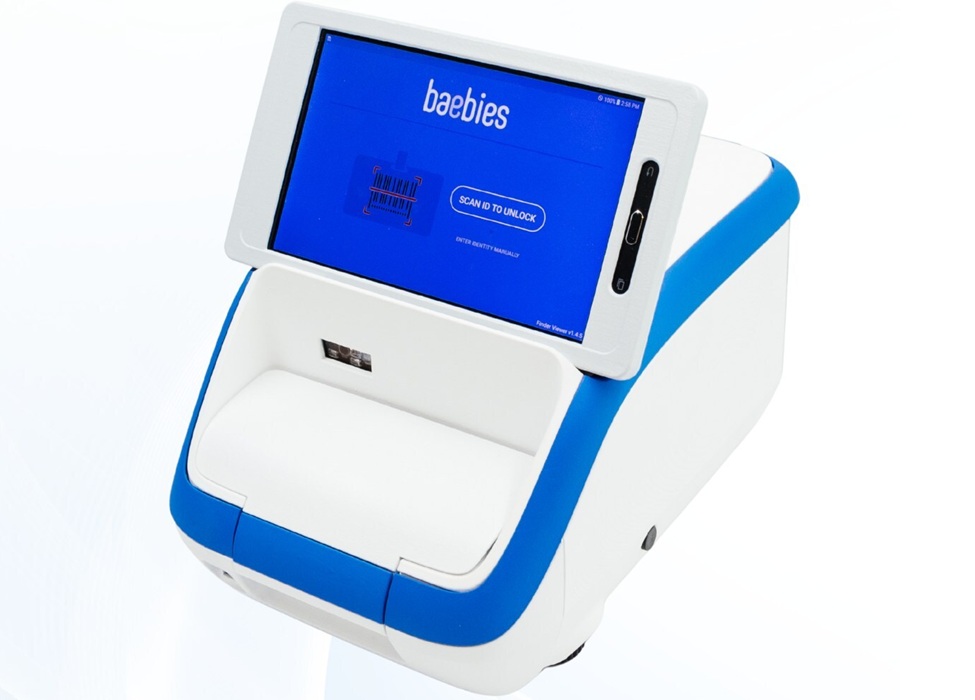
First Point-of-Care Heparin Monitoring Test Provides Results in Under 15 Minutes
Heparin dosing requires careful management to avoid both bleeding and clotting complications. In high-risk situations like extracorporeal membrane oxygenation (ECMO), mortality rates can reach about 50%,... Read moreImmunology
view channel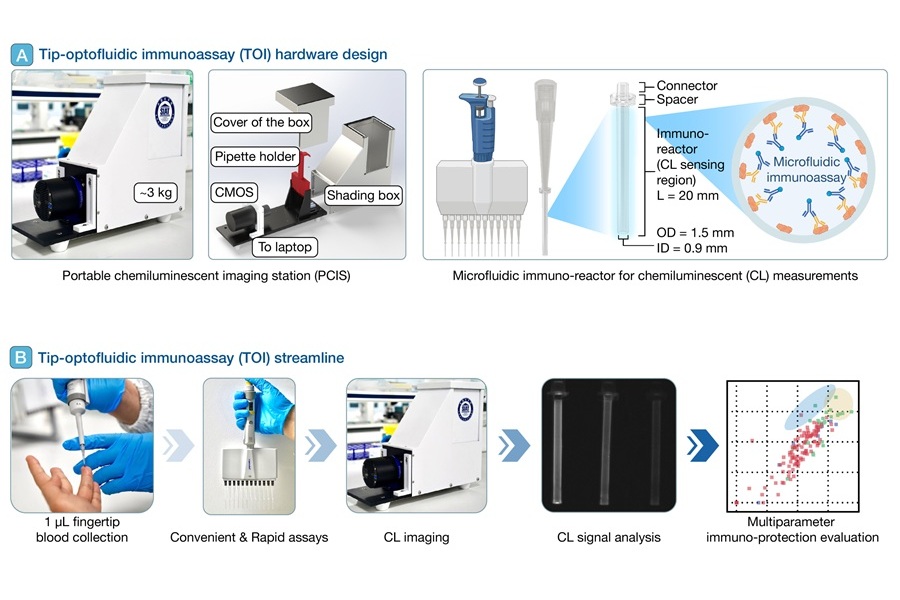
POC Diagnostic Platform Performs Immune Analysis Using One Drop of Fingertip Blood
As new COVID-19 variants continue to emerge and individuals accumulate complex histories of vaccination and infection, there is an urgent need for diagnostic tools that can quickly and accurately assess... Read more
Treatment Switching Guided by Liquid Biopsy Blood Tests Improves Outcomes for Breast Cancer Patients
Standard treatment for patients with advanced estrogen receptor (ER)-positive, HER2-negative breast cancer, a subtype driven by estrogen receptors that fuel tumor growth, often involves aromatase inhibitors,... Read more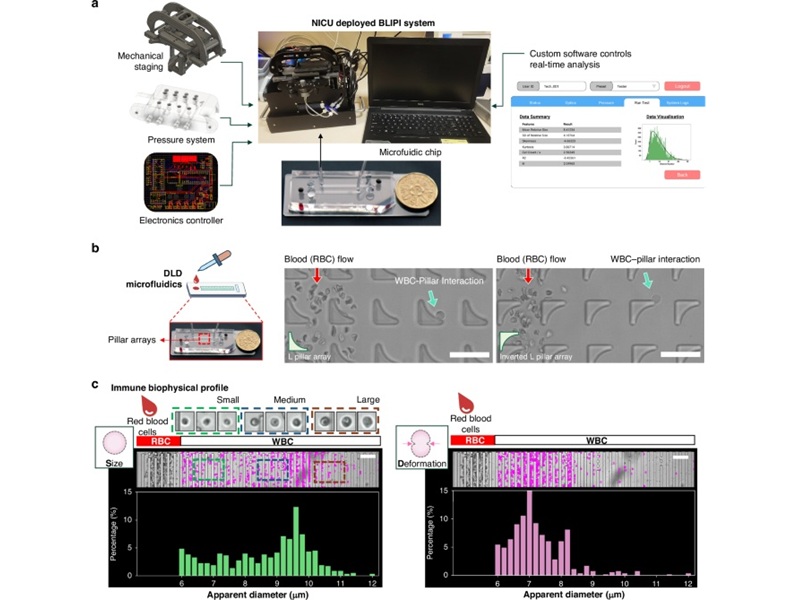
First-Of-Its-Kind Device Profiles Newborns' Immune Function Using Single Blood Drop
Premature infants are highly susceptible to severe and life-threatening conditions, such as sepsis and necrotizing enterocolitis (NEC). Newborn sepsis, which is a bloodstream infection occurring in the... Read more
Stem Cell Test Predicts Treatment Outcome for Patients with Platinum-Resistant Ovarian Cancer
Epithelial ovarian cancer frequently responds to chemotherapy initially, but eventually, the tumor develops resistance to the therapy, leading to regrowth. This resistance is partially due to the activation... Read moreMicrobiology
view channel
Real-Time Genome Sequencing Detects Dangerous Superbug Causing Hospital Infections
Superbug infections caused by Staphylococcus aureus, or ‘golden staph’, are notoriously difficult to treat and claim over one million lives globally each year. These bacteria can rapidly develop resistance... Read more
Diagnostic Test Accurately Detects Colorectal Cancer by Identifying Microbial Signature in Gut Bacteria
Colorectal cancer remains one of the deadliest and most common forms of cancer worldwide, with only 40% of cases diagnosed before metastasis. Current screening methods, like colonoscopy, are invasive and... Read morePathology
view channel
Visualization Tool Illuminates Breast Cancer Cell Migration to Suggest New Treatment Avenues
Patients with breast cancer who progress from ductal carcinoma in situ (DCIS) to invasive ductal carcinoma (IDC) face a significantly worse prognosis, as metastatic disease remains incurable.... Read more
New At-Home Cervical Cancer Screening Device to Increase Accessibility for Patients
Cervical cancer is typically linked to certain types of human papillomavirus (HPV), which is passed through sexual contact. While many people are infected with HPV, only a small percentage will develop... Read more
New Cancer Testing Standards to Improve Diagnostic Accuracy for Oncology Labs
Accurate diagnosis, including the identification of genomic markers, is essential for determining the most effective cancer treatments for patients. To ensure this, laboratories require reliable reference... Read more
Digital Diagnostic Platform Uses Electronic Technology for Rapid Disease Detection
Traditional diagnostic methods often fall short in providing rapid, accurate detection of infectious diseases, leading to delays in treatment and increased transmission. Now, a groundbreaking digital diagnostics... Read moreIndustry
view channel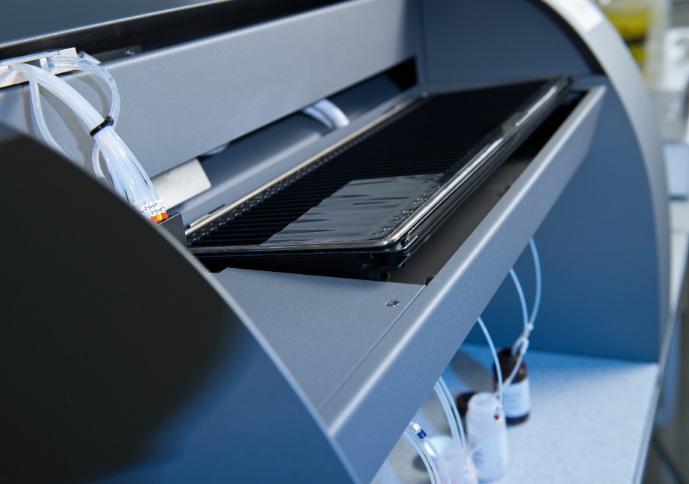
Fujirebio Collaborates with Stanford Medicine to Advance Infectious Disease Research
Fujirebio (Tokyo, Japan) has entered into a collaboration with Stanford Medicine (Palo Alto, CA, USA) to accelerate the adoption of ultrasensitive immunoassays that incorporate single-molecule counting... Read more
QuidelOrtho to Acquire MDx Company LEX Diagnostics
QuidelOrtho Corporation (San Diego, CA, USA) has announced a refocusing of its molecular diagnostics strategy which now includes acquiring LEX Diagnostics (Cambridgeshire, UK) and discontinuing development... Read more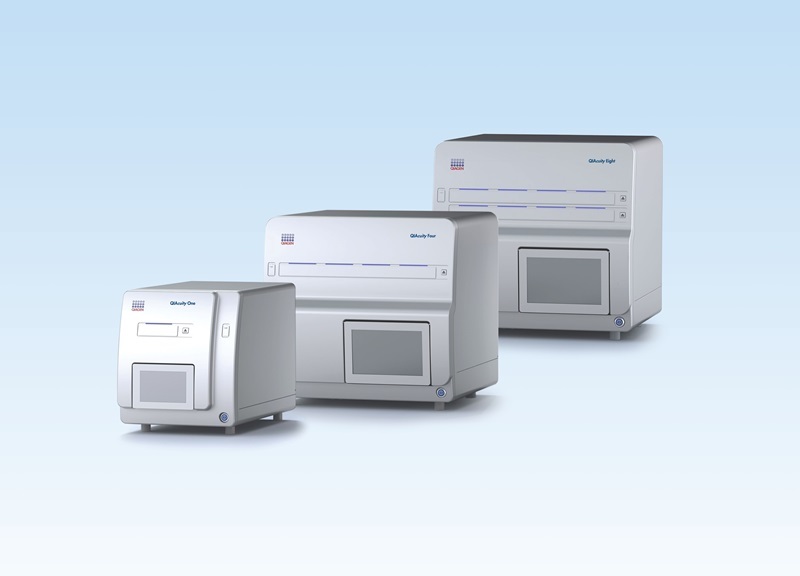









.jpg)


